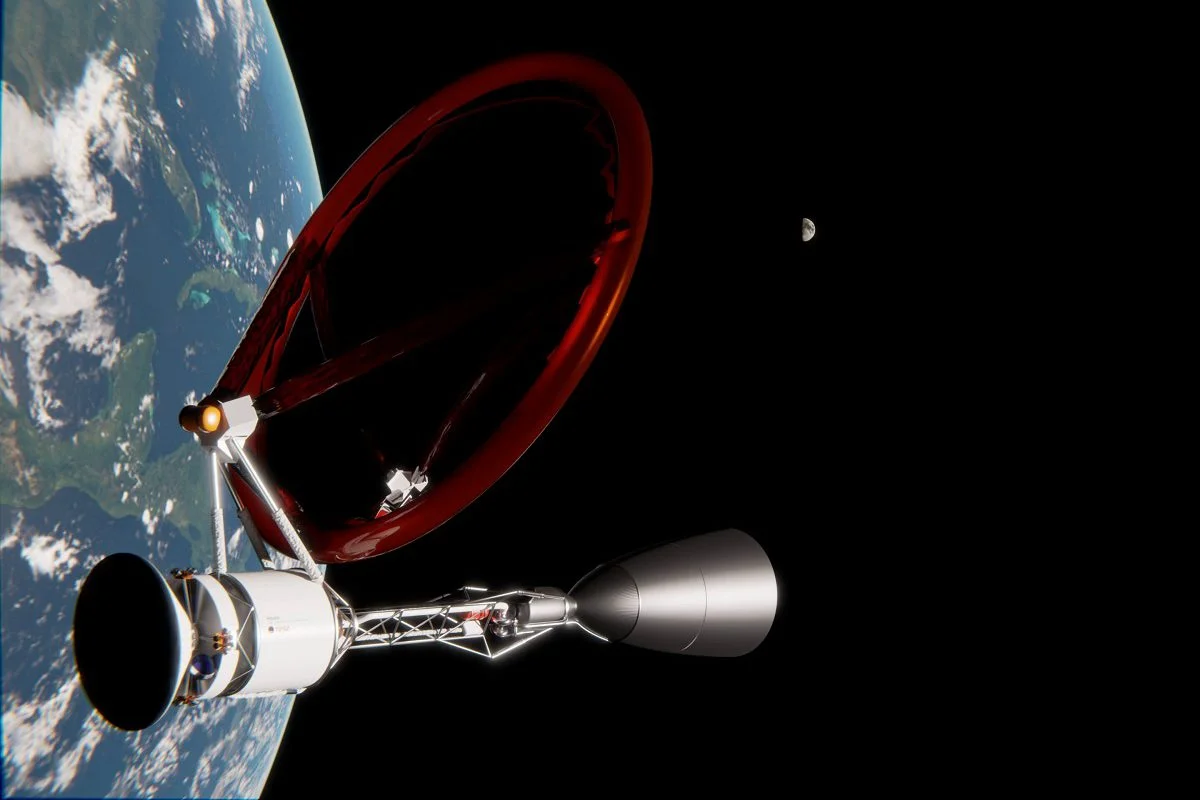Scientists propose sending spacecraft to Mars using a laser

Scientists at McGill University have created a technology concept that will allow rockets to be launched to Mars using an array of IR lasers ten meters in diameter. The essence of the technology is to heat the hydrogen plasma in the ship's fuel tank, which will inject thrust from hydrogen gas. Theoretically, such a system would make it possible to reach Mars in 45 days. With the current approach, even SpaceX rockets can reach their destination in only six months.
In 2018, NASA ordered engineers to create a way to deliver a spacecraft to Mars with a payload of less than 1,000 kg and a mission duration of no more than 45 days. Also, the developed system should fly to remote parts of the solar system.
The concept of traction using infrared lasers provides that the wavelength of each beam will be on the order of 1 micron with a total power of 100 MW, which is equivalent to the energy consumption of 80,000 US households. The payload, which will rotate in medium Earth orbit, will acquire a reflector. In the process of reflection, the beam from the earth's surface will be directed to a heating chamber containing hydrogen plasma. When the core is heated to 40,000 degrees Celsius, hydrogen will reach 9,700 degrees and begin to exit through the nozzle. Thus, thrust will be created, which will push the spacecraft away from our planet with an interval of 58 minutes. Side-mounted thrusters will be able to keep the craft level with the laser beam as the Earth rotates.
At the end of the radiation, the ship will hit the road at a speed of 17 kilometers per second - this figure is enough for an eight-hour flight to the moon. Having reached the atmosphere of the Red Planet, the device will fly at a speed of 16 km / s. To create reverse thrust in the distant future on Mars, people will be able to build another laser array, similar to the earth's. In the meantime, the apparatus for slowing down will have to apply aerocapture, that is, aerodynamic braking in the atmosphere. This method is quite risky, since it is possible to subject the apparatus to an overload of 8 g, which is almost equal to the limit of human capabilities. Another difficulty will be enhanced heat fluxes on the body due to friction in the atmosphere. These impacts will not be able to transfer the currently existing materials of thermal protection systems.
Thrust using IR lasers in the future will allow you to send 1000 kg of cargo to the Red Planet, using an array of laser devices the size of a volleyball field. It is expected that the first such flight can be carried out ten years after the first manned flights to Mars, that is, in 2040.
In 2018, NASA ordered engineers to create a way to deliver a spacecraft to Mars with a payload of less than 1,000 kg and a mission duration of no more than 45 days. Also, the developed system should fly to remote parts of the solar system.
The concept of traction using infrared lasers provides that the wavelength of each beam will be on the order of 1 micron with a total power of 100 MW, which is equivalent to the energy consumption of 80,000 US households. The payload, which will rotate in medium Earth orbit, will acquire a reflector. In the process of reflection, the beam from the earth's surface will be directed to a heating chamber containing hydrogen plasma. When the core is heated to 40,000 degrees Celsius, hydrogen will reach 9,700 degrees and begin to exit through the nozzle. Thus, thrust will be created, which will push the spacecraft away from our planet with an interval of 58 minutes. Side-mounted thrusters will be able to keep the craft level with the laser beam as the Earth rotates.
At the end of the radiation, the ship will hit the road at a speed of 17 kilometers per second - this figure is enough for an eight-hour flight to the moon. Having reached the atmosphere of the Red Planet, the device will fly at a speed of 16 km / s. To create reverse thrust in the distant future on Mars, people will be able to build another laser array, similar to the earth's. In the meantime, the apparatus for slowing down will have to apply aerocapture, that is, aerodynamic braking in the atmosphere. This method is quite risky, since it is possible to subject the apparatus to an overload of 8 g, which is almost equal to the limit of human capabilities. Another difficulty will be enhanced heat fluxes on the body due to friction in the atmosphere. These impacts will not be able to transfer the currently existing materials of thermal protection systems.
Thrust using IR lasers in the future will allow you to send 1000 kg of cargo to the Red Planet, using an array of laser devices the size of a volleyball field. It is expected that the first such flight can be carried out ten years after the first manned flights to Mars, that is, in 2040.





There are no comments yet :(